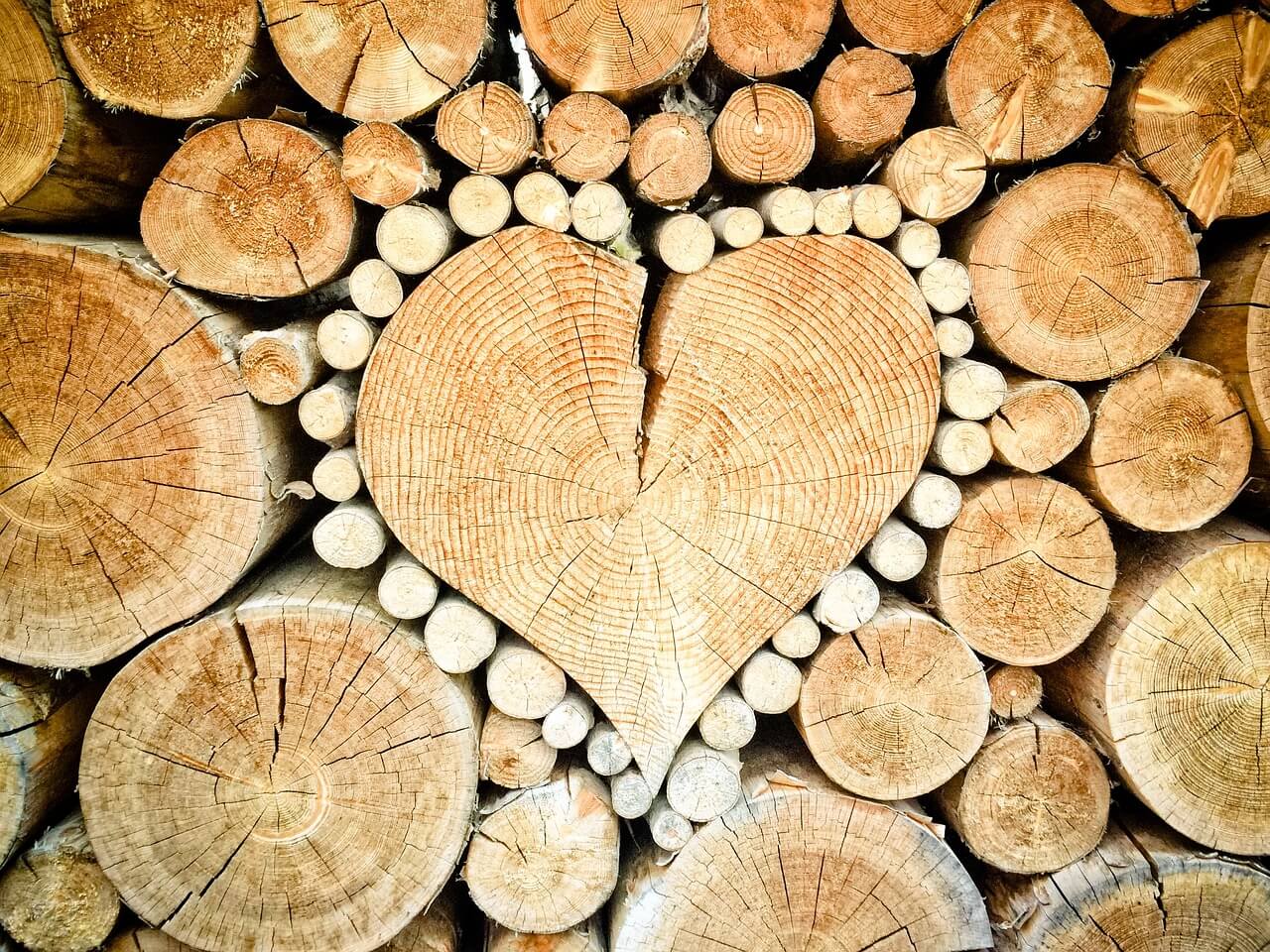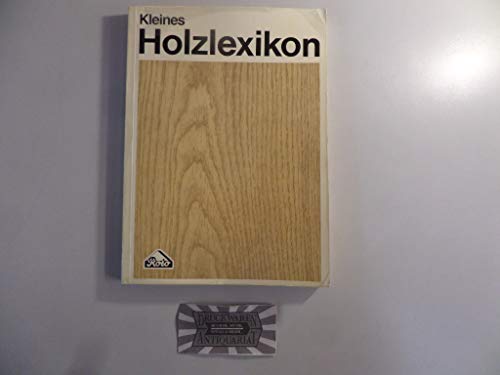Holzlexikon
A

- Ahorn: Hartholz mit hellem, gleichmäßigem Farbton
- Akazie: Hartholz mit rötlich-brauner Färbung und hoher Festigkeit
- Asche: Hartholz mit hellem bis braunem Farbton und Elastizität
B

- Birke: Hartholz mit hellem, rötlichem Farbton und hoher Schlagzähigkeit
- Buche: Hartholz mit gleichmäßigem, rötlich-braunem Farbton und hoher Festigkeit
C

- Cedernholz: Weichholz mit aromatischem Duft und Witterungsbeständigkeit
D
- Douglasie: Nadelholz mit rötlich-brauner Färbung und hoher Dimensionsstabilität
- Douglasfichte: siehe Douglasie
E
- Eiche: Hartholz mit brauner, maserierter Färbung und hoher Haltbarkeit
- Erle: Hartholz mit rötlich-braunem Farbton und hoher Feuchtigkeitsbeständigkeit
F
- Fichte: Nadelholz mit hellem, gleichmäßigem Farbton und geringem Gewicht
- Föhre: siehe Kiefer
G
- Gewürznelkenholz: Hartholz mit dunkelbrauner Färbung und aromatischem Duft
H
- Hemlocktanne: Nadelholz mit hellem, gleichmäßigem Farbton und hoher Elastizität
- Husse: siehe Fichte
I
- Imbuia: Hartholz mit brauner, maserierter Färbung und hoher Härte
J
- Jarrah: Hartholz mit rötlich-brauner Färbung und hoher Widerstandsfähigkeit gegen Witterungseinflüsse
K
- Kastanie: Hartholz mit brauner, maserierter Färbung und hoher Dauerhaftigkeit
- Kiefer: Nadelholz mit hellem, harzreichem Farbton und geringer Festigkeit
- Kirsche: Hartholz mit rötlich-brauner Färbung und schöner Maserung
L
- Lärche: Nadelholz mit rötlich-brauner Färbung und hoher Witterungsbeständigkeit
- Lipa: Hartholz mit hellem, gleichmäßigem Farbton und geringer Härte
M
- Mahagoni: Hartholz mit rötlich-brauner Färbung und hoher Widerstandsfähigkeit gegen Fäulnis
N
- Nussbaum: Hartholz mit brauner, maserierter Färbung und hoher Festigkeit
O
- Olive: Hartholz mit grünlich-brauner Färbung und hoher Härte
P
- Padouk: Hartholz mit rötlich-brauner Färbung und hoher Haltbarkeit
- Palisander: Hartholz mit rötlich-brauner, maserierter Färbung und hohem Wert
Q
- Quarkstein: Hartholz mit rötlich-brauner Färbung und hoher Härte
R
- Robinie: Hartholz mit hellbrauner, maserierter Färbung und hoher Haltbarkeit
S
- Schleifholz: Weichholz mit hellem, gleichmäßigem Farbton und geringer Festigkeit
- Schwarznussbaum: Hartholz mit dunkelbrauner, maserierter Färbung und hohem Wert
T
- Teak: Hartholz mit rötlich-brauner Färbung und hoher Witterungsbeständigkeit
U
- Ulme: Hartholz mit brauner, maserierter Färbung und hoher Festigkeit
W
- Walnussbaum: siehe Nussbaum
- Wenge: Hartholz mit dunkelbrauner Färbung und hoher Härte
Z
- Zirbe: Nadelholz mit hellem, gleichmäßigem Farbton und aromatischem Duft
- Zeder: siehe Zedernholz## [Holzlexikon]
Executive Summary
This comprehensive Holzlexikon is an all-encompassing resource providing in-depth information on wood, its properties, and its numerous applications. With detailed explanations of various wood species, their characteristics, and practical uses, this lexicon empowers readers to make informed decisions and gain a deeper understanding of this versatile material.
Introduction
Wood is an essential natural resource that has shaped civilizations throughout history. From humble beginnings as a building material and fuel source to its modern-day multifaceted applications, wood remains a vital element in our world. This Holzlexikon delves into the intricacies of wood, exploring its properties, classifications, and practical implications.
FAQs
-
What is the difference between softwood and hardwood?
- Softwoods originate from coniferous trees, characterized by needle-like leaves and seed cones.
- Hardwoods, derived from deciduous trees, feature broad leaves that shed seasonally.
-
How do I choose the right wood for my project?
- Consider the project’s intended use and required properties, such as durability, strength, and aesthetic appeal.
- Consult with experts or refer to reliable resources to gather comprehensive information on different wood species.
-
What are the advantages of using sustainable wood products?
- Sustainable forestry practices ensure the preservation of forests and biodiversity.
- Choosing sustainably sourced wood supports responsible environmental stewardship and reduces the impact on natural resources.
Subtopics
Wood Anatomy
- Cambium: A thin layer responsible for producing new wood cells.
- Heartwood: The central, darker part of the tree, providing structural support.
- Sapwood: The lighter, outer layer that transports water and nutrients.
- Grain: The pattern formed by wood fibers, influencing appearance and properties.
- Vessels: Tiny channels that transport water in hardwoods, contributing to grain patterns.
Wood Properties
- Density: The weight of wood per unit volume, affecting strength and durability.
- Hardness: The resistance to indentation, important for flooring and furniture applications.
- Strength: The ability to withstand forces, crucial for structural purposes.
- Moisture Content: The amount of water present in wood, affecting dimensional stability and susceptibility to rot.
- Fire Resistance: The ability to resist combustion, crucial for building materials.
Woodworking Techniques
- Joinery: Techniques for connecting wood pieces without using nails or screws.
- Carving: Shaping wood using chisels and gouges, creating intricate designs.
- Finishing: Applying coatings to enhance appearance and protect against wear and tear.
- Veneering: Applying thin wood layers to surfaces to improve aesthetics or create unique patterns.
- Lamination: Bonding multiple wood layers to create thicker, stronger, or curved structures.
Wood Species
- Oak: Known for its strength, durability, and beautiful grain patterns.
- Mahogany: A tropical hardwood prized for its reddish-brown color and resistance to decay.
- Pine: A widely used softwood with a versatile range of applications, from construction to furniture.
- Cedar: A naturally rot-resistant wood used for outdoor structures, such as decks and siding.
- Teak: A premium hardwood renowned for its exceptional durability and water resistance, often used for boat building.
Wood Applications
- Construction: Framing, flooring, roofing, and structural elements.
- Furniture: Tables, chairs, cabinets, and other household furnishings.
- Musical Instruments: Guitars, violins, and other instruments that utilize wood’s acoustic properties.
- Art and Crafts: Sculptures, carvings, and decorative items.
- Packaging: Crates, boxes, and other protective containers.
Conclusion
Wood is a remarkable material that offers a wide range of uses and benefits. This Holzlexikon provides a comprehensive overview of wood’s properties, classifications, and applications, empowering readers to appreciate the versatility and importance of this natural resource. By understanding the characteristics and capabilities of different wood species and woodworking techniques, individuals can make informed choices and harness the beauty and functionality of wood in their projects and everyday lives.
Keyword Tags
- Wood Properties
- Woodworking Techniques
- Wood Species
- Sustainable Forestry
- Wood Applications